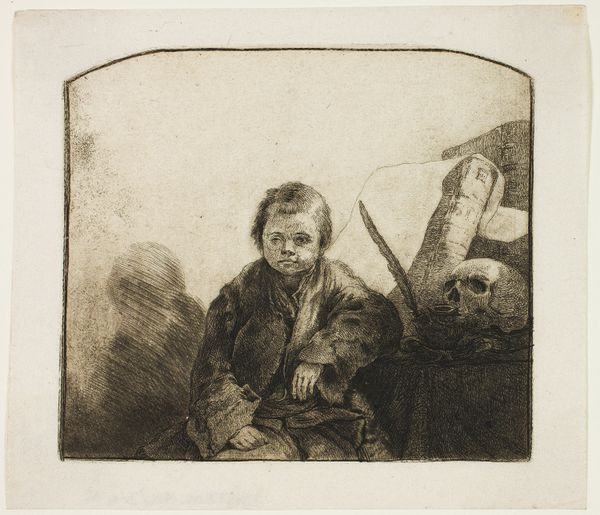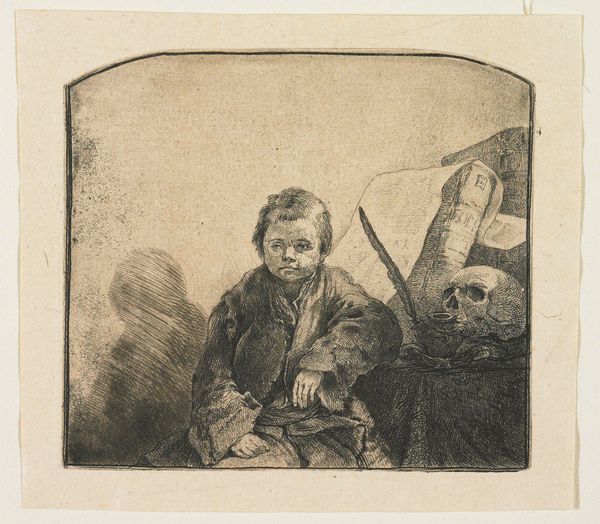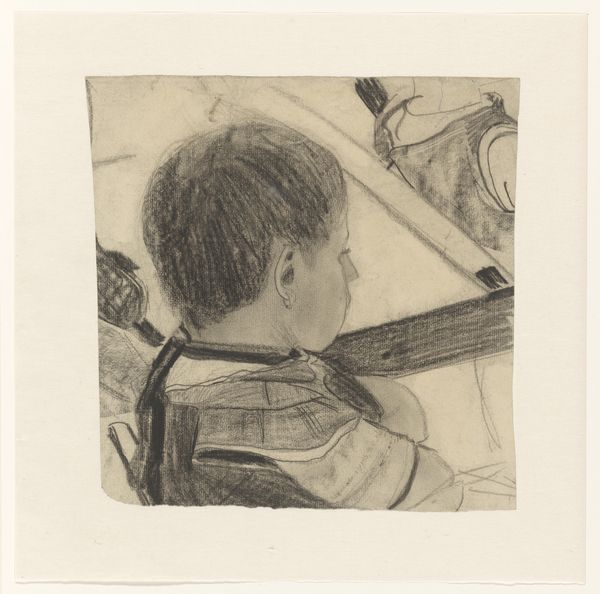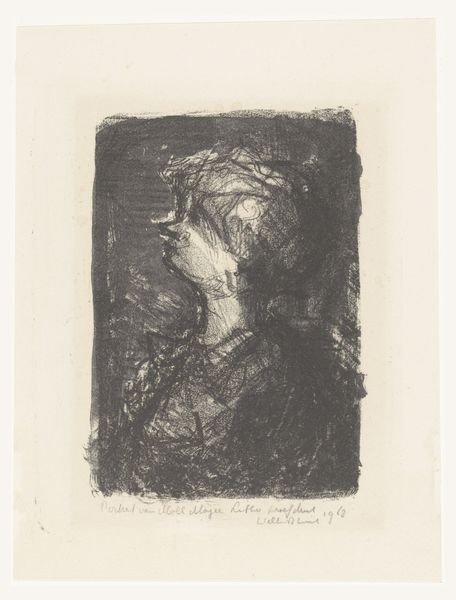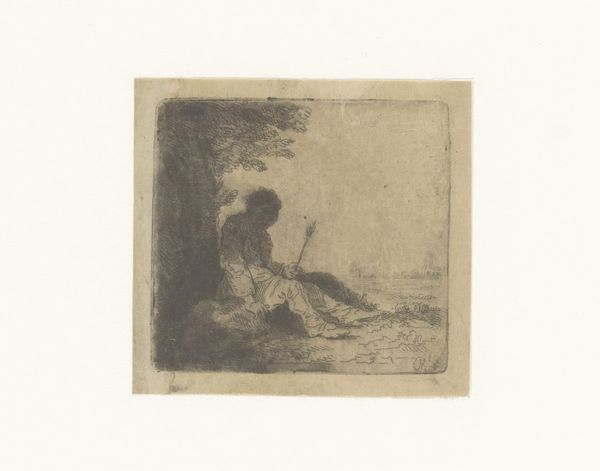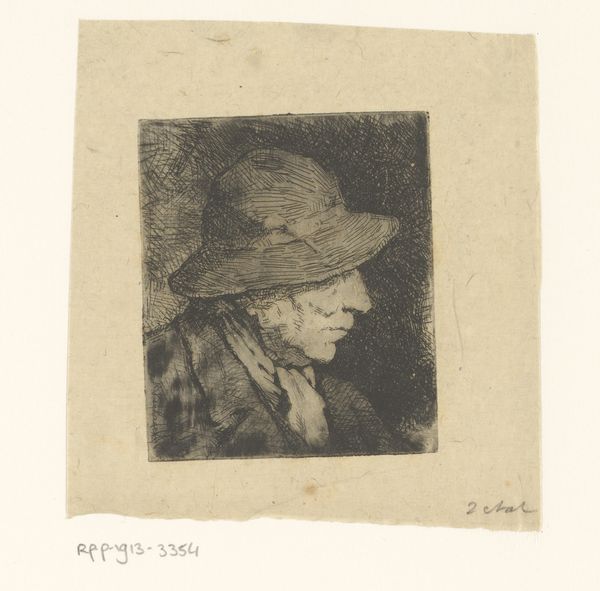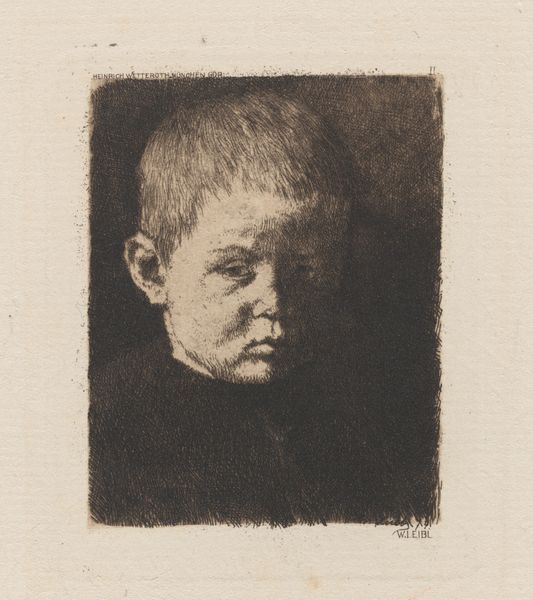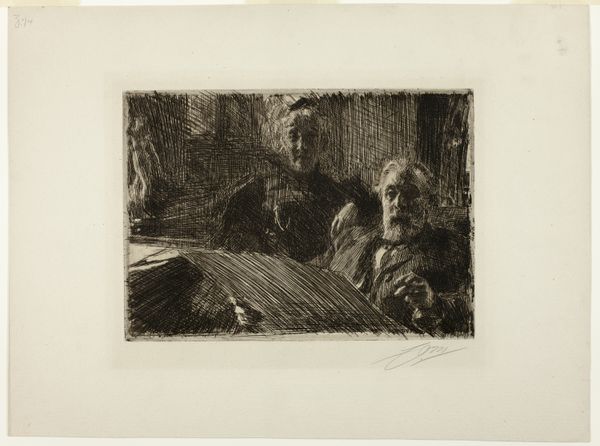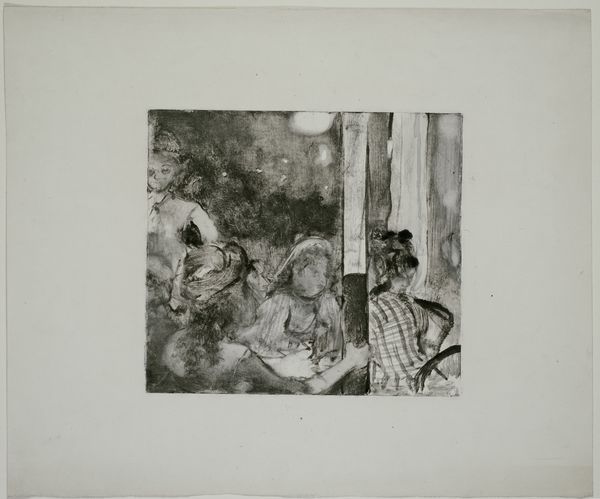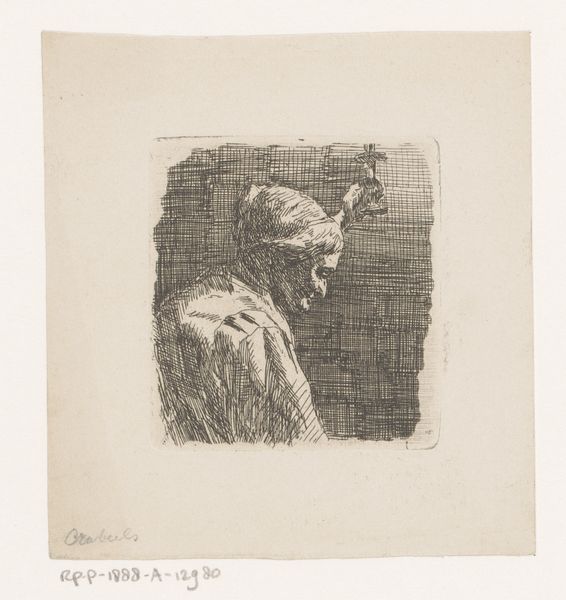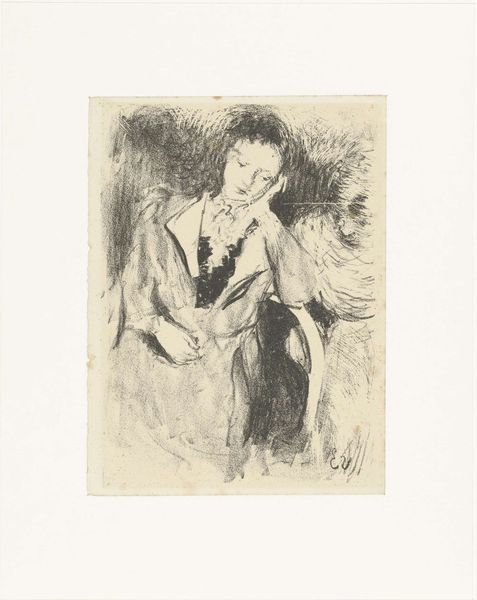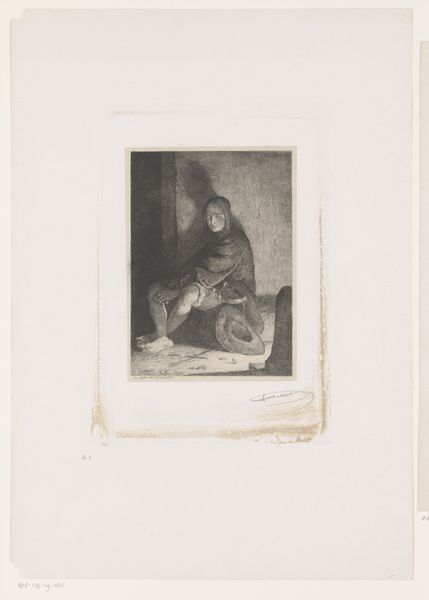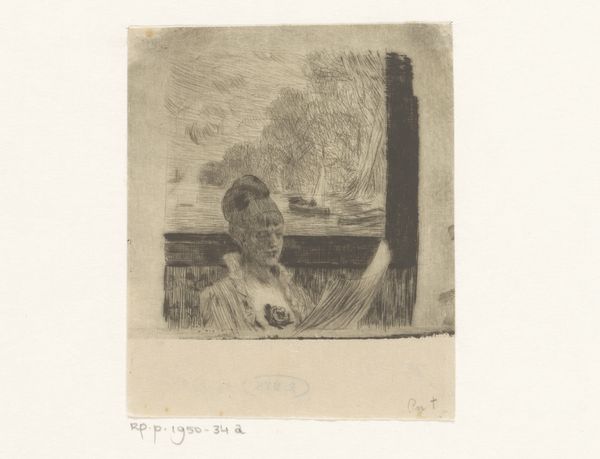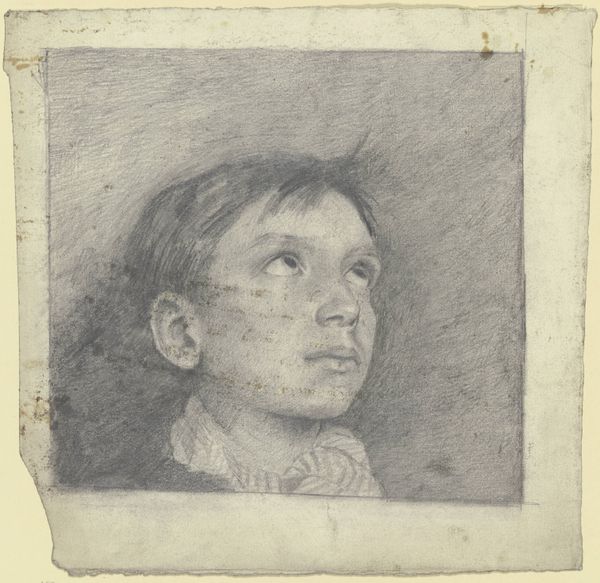
Dimensions: height 76 mm, width 89 mm
Copyright: Rijks Museum: Open Domain
Curator: Before us is a drawing, an etching with some tempera, entitled "Zittende jongen bij een tafel met boek en schedel"—"Seated Boy at a Table with Book and Skull"—likely created between 1755 and 1830 by Jean-Pierre Norblin de la Gourdaine. Editor: It has a certain melancholic feel to it, wouldn't you say? The somber lighting, the child's gaze, and, of course, that ever-present skull. Curator: Absolutely. And considering the media, it is worth noticing how etching at the time was shifting away from purely reproductive work and into a mode of personal expression and, indeed, social commentary. Editor: How so? The subject itself suggests a traditional *vanitas*, a reminder of life's brevity. Skulls were quite the fashion in memento mori. What would someone at the time read into it in its current style? Curator: Yes, skulls had been circulating for centuries as symbols of death, of vanity and fleeting beauty. However, if we analyze Norblin's method and material, we must notice the role that tempera plays here, enriching the shades of the drawing in a singular fashion. Consider too how the rise of print culture in the 18th century made these images much more accessible to a wider audience than ever before. Editor: It allowed these themes to permeate everyday life, in a way. The image is no longer reserved for the elite few who could afford an original painting, no. Now a larger segment of the population could consider mortality, but mediated through readily produced, if artful, prints. Curator: Exactly! What implications would it carry to represent youth next to these deathly emblems, or make images in accessible ways? How did the public perceive it and relate it to genre paintings at the time, depicting domestic scenes and social encounters of regular people. It definitely opened an interesting path into what we consider to be our relationship with social institutions, our role in the face of something we all eventually must encounter. Editor: An easily circulated artwork encouraging dialogue. Inexpensive mortality... Perhaps, by reproducing it into multiple copies for the masses, it tried to strip mortality from the fear. To normalize death? Curator: Maybe normalizing is too much to ask. I like to think of these artifacts as cultural touchstones, though. Objects we circle around, continuously finding meaning in. Editor: I find this small print endlessly intriguing. An excellent conversation piece for understanding the time!
Comments
No comments
Be the first to comment and join the conversation on the ultimate creative platform.
